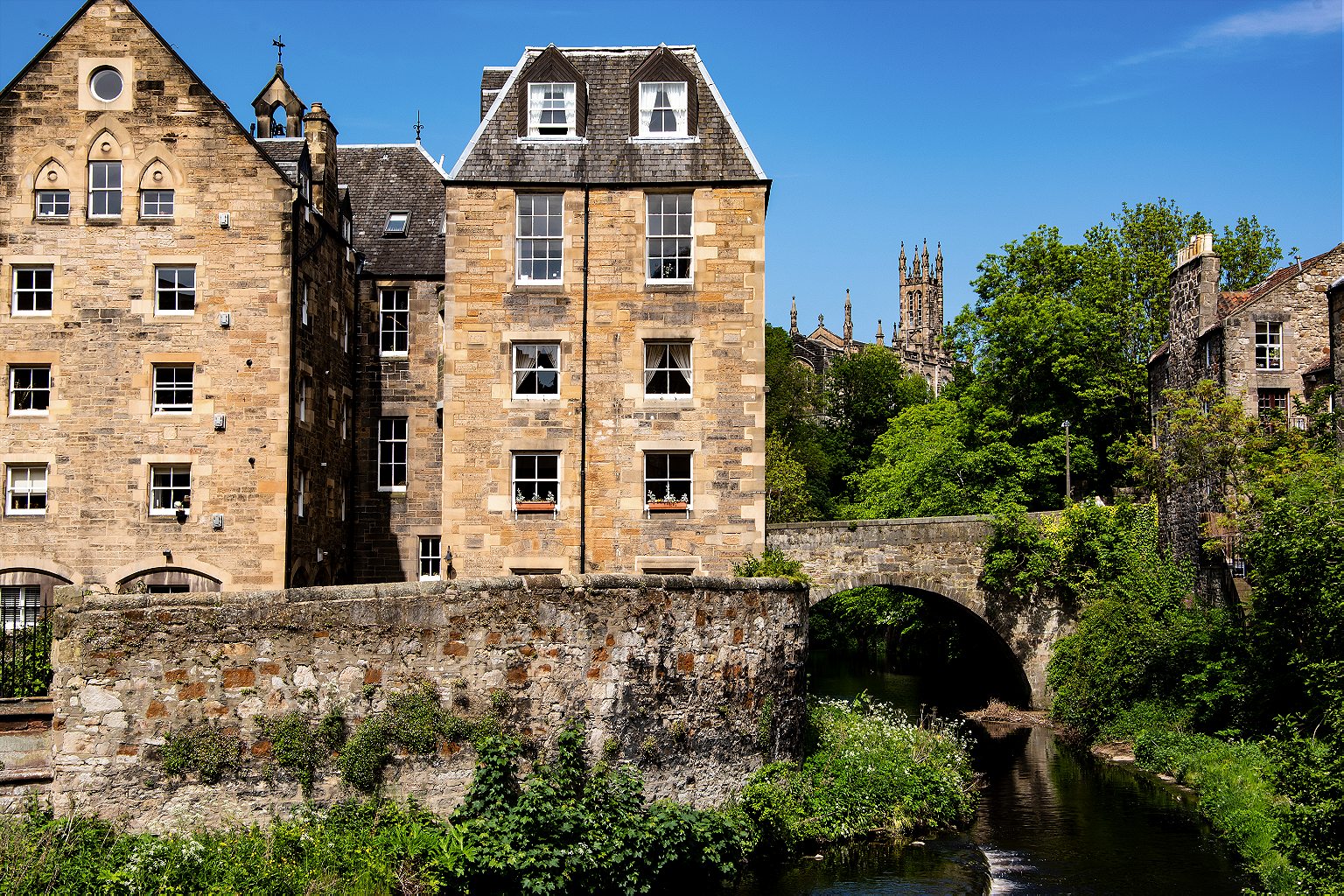
From nearly one thousand years ago to the mid-twentieth century, the river that runs through Dean Village powered the most important grain mills in the region. With the modernization of milling technology and the construction of new, bigger mills at Leith, Dean Village experienced a brief period of decline in the 1960s. This didn’t last long—Dean Village’s peaceful charm soon started to draw in developers, residents, and visitors. Today, it’s one of the most desirable residential areas in Edinburgh. Yet somehow, even with all this attention, Dean Village retains its small-town atmosphere. It’s never too crowded to admire the meticulously restored architecture, some of which dates back to the High Middle Ages, and the soft babbling of the Water of Leith is always audible.
North of the Village is the Dean Cemetery. Built on top of the former site of Dean House, a 17th-century mansion, the Dean Cemetery is the resting place of two centuries of Edinburgh luminaries, including suffragette Agnes Henderson Brown and arctic explorer John Young Buchanan. Just west of the cemetery is the Scottish National Gallery of Modern Art. In the not-so-outlandish likelihood of rain, the National Gallery provides a spacious, dry, and color-filled respite from the dreary outdoors.
But in rain or shine, there’s nothing like a stroll along the Water of Leith Walkway to make you forget that you’re in Scotland’s second most populous city. Especially worth your time is the verdant stretch of the Walkway that winds east from Dean Bridge through Dean Private Gardens. You’ll pass by the holy wells of St. George and St. Bernard, which are housed in two Greek Revival pavilions by the river.
